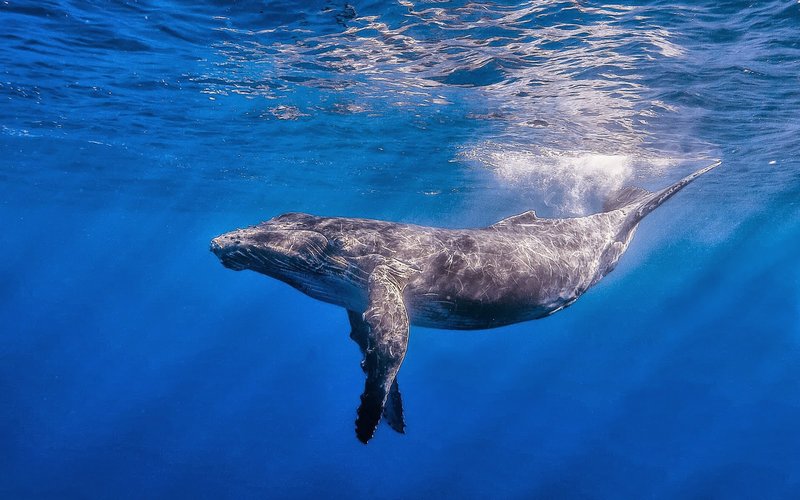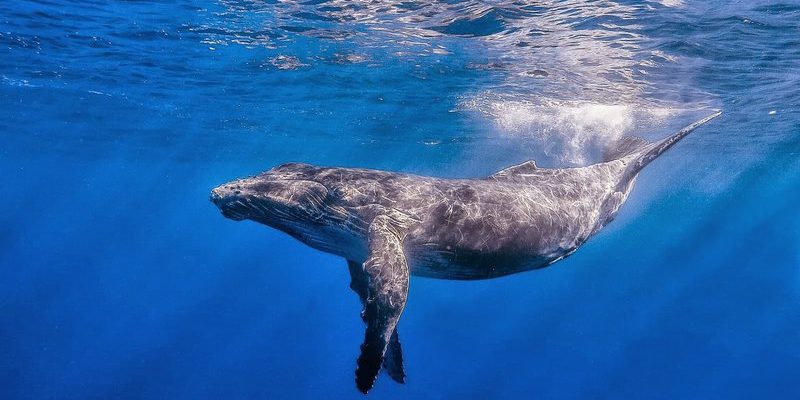
Whales are fascinating creatures that roam the vast oceans of our planet. They are not just big fish; they’re mammals, just like us! Imagine a creature so large that it can weigh as much as 33 elephants, yet it can glide gracefully through the water. This ability to swim, breathe air, and care for their young makes whales unique among marine life. Each species has its distinct characteristics, behaviors, and habitats, making the study of whales a continuously intriguing adventure.
When you think about whales, you might picture their massive size or hear the haunting songs they sing underwater. These melodies can travel for miles and are crucial for communication and navigation. Just picture yourself on a boat, listening to the deep, resonant calls echoing through the water. It’s a reminder of how connected we are to nature and how much we have yet to learn about these gentle giants.
Classification of Whales
Whales belong to a group called Cetacea, alongside dolphins and porpoises. They are further divided into two main categories: baleen whales and toothed whales. Baleen whales, like the blue whale and humpback whale, filter smaller organisms like krill and plankton from the water. On the other hand, toothed whales, including the sperm whale and orca, have teeth and hunt larger prey such as fish and squid.
This classification highlights the diversity found within the whale family. Baleen whales tend to be larger and can grow up to 100 feet long, while toothed whales vary widely in size and eating habits. Understanding this classification helps us appreciate how these magnificent creatures have adapted to their environments and dietary needs.
Physical Characteristics of Whales
Whales are known for their impressive physical features. Their size alone can be awe-inspiring! The blue whale holds the record as the largest animal to have ever lived, reaching lengths of up to 100 feet and weighing around 200 tons. Their skin, which can be various shades of blue and grey, helps them blend in with the ocean waves—perfect for avoiding predators.
Another notable characteristic is their blowhole located on the top of their heads. When they surface to breathe, they exhale forcefully, creating a spout of mist that can reach up to 30 feet in the air. This is often how whales are spotted from boats or shorelines, as their blow is a telltale sign of their presence. This physical feature is not just for show; it’s essential for their survival.
Habitat of Whales
Whales can be found in every ocean on Earth, from the polar regions to the tropical waters. They prefer deep waters where they can dive to great depths while hunting for food. Some species, like the gray whale, undertake incredible migrations, traveling thousands of miles between feeding and breeding grounds. This migratory journey is one of the longest in the animal kingdom.
Humpback whales are especially known for their remarkable migration patterns. They travel from their feeding grounds in the cold waters of Alaska to the warmer waters off Hawaii for breeding. This long journey showcases their resilience and incredible navigation skills, proving that even the largest creatures have their own paths to follow in life.
Diet and Feeding Habits
The diet of a whale largely depends on its species. Baleen whales consume vast amounts of small organisms, such as krill and plankton, by gulping large amounts of water and filtering out the food through their baleen plates. This feeding method is often referred to as filter feeding and can result in consuming tons of food in just one feeding session.
In contrast, toothed whales have a more varied diet. They hunt fish, squid, and sometimes even larger prey. The sperm whale, for example, has a diet that primarily consists of deep-sea squid. They are powerful divers, reaching depths of over 3,000 feet in search of food, showcasing their unique ability to adapt to different hunting strategies depending on their environment.
Whale Communication and Social Behavior
Whales are more than just solitary swimmers. Many species are highly social and communicate through complex vocalizations. The songs of humpback whales are particularly famous, with their long sequences and varied pitches that can last for hours. These songs are believed to play a role in mating and attracting partners, and they may even serve as a form of communication between groups.
In addition to vocalizations, whales exhibit social behaviors that can be quite intricate. They travel in groups called pods, which can range in size from a few individuals to dozens. These pods often consist of family members, and the bonds between them can be strong. They are known to engage in playful behavior, such as breaching, tail slapping, and even swimming together in synchronized movements. This social structure highlights how whales, despite their size, have a sense of community much like we do!
Conservation and Threats
Sadly, many whale species face threats that impact their populations and habitats. Commercial whaling, pollution, and climate change are significant concerns for these majestic animals. Whales are often caught unintentionally in fishing gear or suffer from ship strikes. Additionally, the changing ocean temperatures can affect their food sources, making it challenging for them to survive.
Conservation efforts are underway to protect whales and their habitats. Groups and governments worldwide are working to enforce laws against whaling and to create marine protected areas. By raising awareness about the challenges faced by whales, we can support initiatives that help preserve their existence for future generations. Every small action counts, and becoming an advocate for these gentle giants can lead to meaningful change.
Facts About Whales
| Species | Size | Diet | Lifespan |
| Blue Whale | Up to 100 ft | Krill | 70-90 years |
| Humpback Whale | Up to 60 ft | Krill and small fish | 45-50 years |
| Sperm Whale | Up to 60 ft | Squid | 60-70 years |
| Orca | Up to 32 ft | Fish and marine mammals | 50-90 years |
Whales are not just remarkable for their size and beauty; they are a window into the health of our oceans and the interconnectedness of life on Earth. By learning about their habits, struggles, and triumphs, we can better appreciate the world we share. The more we understand these magnificent creatures, the better equipped we are to protect them. Let’s commit to being stewards of the ocean, ensuring that whales continue to thrive in the waters of our planet.
FAQ
What is the largest whale species?
The blue whale holds the title for the largest whale species, and indeed, the largest animal on Earth. These gentle giants can grow up to 100 feet long and weigh as much as 200 tons. Their size is often hard to comprehend; just imagine a creature that could be longer than three school buses lined up!
How do whales communicate?
Whales use a variety of vocalizations to communicate with one another. Humpback whales are particularly known for their complex songs, which can consist of a series of sounds lasting up to 30 minutes. These songs can travel across vast distances underwater, allowing whales to maintain communication over large areas.
Do whales have natural predators?
While adult whales are apex predators, they can have natural enemies, particularly when they are young or vulnerable. Orcas, also known as killer whales, are known to hunt young gray whales, and larger species of sharks may target smaller whales. However, adult whales generally have few threats in the ocean.
How long can whales hold their breath?
Whales are excellent divers and can hold their breath for impressive lengths of time. For instance, sperm whales can dive for up to 90 minutes before needing to surface for air. This ability allows them to reach deep ocean depths where their prey resides, showcasing their adaptability in the marine environment.
What do whales do during migration?
During migration, whales travel to warmer waters for breeding and calving or to cooler waters for feeding. For example, humpback whales migrate thousands of miles from their feeding grounds in the Arctic to warm Caribbean waters to give birth. This incredible journey highlights their resilience and navigational skills, often traveling thousands of miles with precision.
How can we help protect whale populations?
To protect whales, we can support organizations focused on marine conservation, reduce plastic use to minimize ocean pollution, and advocate for policies that protect marine habitats. Even small actions, like using eco-friendly products or participating in beach clean-ups, can have a positive impact on ocean health and, subsequently, whale populations.
Are all whales social animals?
While many whale species are social, some prefer solitude. For instance, orcas are highly social and live in pods, while others, like the solitary sperm whale, may spend more time alone. Social dynamics among whales can vary greatly depending on the species, their habitats, and their feeding habits, creating a diverse range of behaviors in these magnificent creatures.

